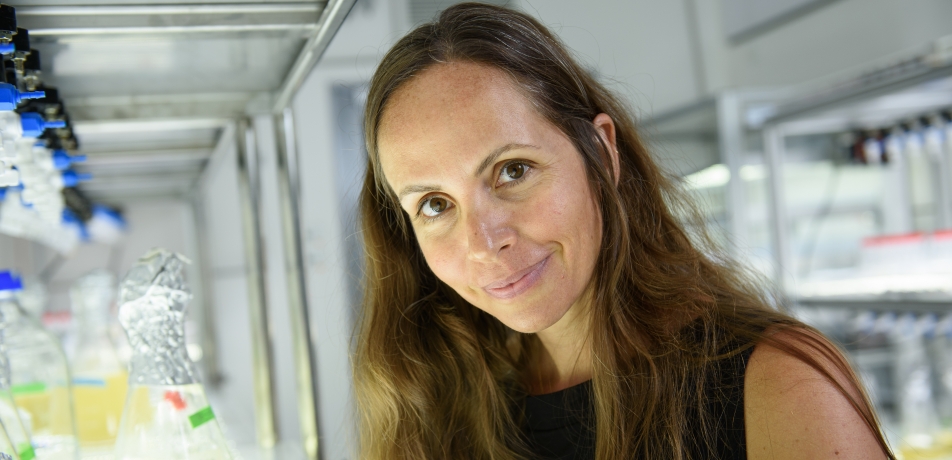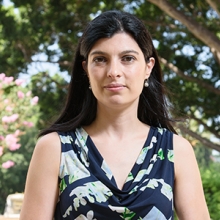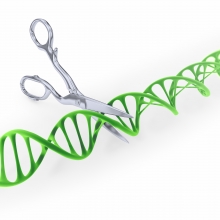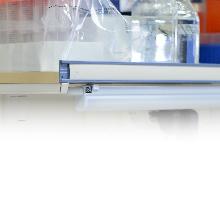Dr. Einat Segev
Can clues from ocean algae predict climate change?
New scientists

Marine bacteria affect the growth, development, and death of algae, providing scientists with critical clues about ancient climate change. This is the research focus of Dr. Einat Segev of the Department of Plant and Environmental Sciences.
Microscopic algae in the ocean are singlecelled organisms, but they’re a cohesive bunch. In life, they gather into massive “blooms” that can stretch thousands of miles across the ocean’s surface. In death, the chalky platelets that cover these tiny algae aggregate on the ocean floor, forming sediments and rocks like the White Cliffs of Dover.
Today, thanks to the work of Dr. Segev, we know about a “hidden partner” in this activity: bacteria. “This makes algae a ‘paleo proxy’ for climate scientists; they use the algal remains as a tool for estimating ancient conditions, and comparing them to current trends.”
Dr. Segev’s training in both geology and microbiology helped her solve a vexing problem: the fact that ocean algae failed to “record” the temperature when transferred to a laboratory environment.
“While finishing my PhD I read research insights that suggested that there is chemical crosstalk between algae and marine bacteria,” she recalls. “I suspected that there might be some critical interaction that—in the absence of bacteria—was not happening in the lab.”
The hunch proved correct; when Dr. Segev grew algae together with bacteria in a single test tube, the algal growth cycle went into high gear. This allowed her to identify something never known before: that algae and bacteria depend on each other. Dr. Segev observed that marine bacteria physically attach to algae, and also determined that algae provide bacteria with food. The bacteria “reciprocate” by producing a growth hormone that drives the algal life cycle forward—up to a point.
“After a few weeks, the bacteria produced the hormone at a lethal level, killing the algal host,” she says. “This freed the bacteria to swim away and attach to another food source, and also released the dead algae’s calcified platelets. This is similar to the process that produces algal sediments in the ocean.” Dr. Segev is currently preparing a more complex model that, like the ocean environment, includes more than one type of bacteria.
Dr. Segev’s approach makes it possible to predict when alage die in the test tube, something that may eventually help climate scientists “read” the geological record with greater accuracy. And while she has been known to augment her laboratory work by supervising the collection of environmental samples, at the moment she is quite busy exploring her new environment on campus.
“The founders envisioned a scientific institution that functions as a community,” she says, “The Weizmann Institute has really welcomed me home, and I feel at home living on campus and working in my lab.”
Dr. Einat Segev completed her BSc in biology and geology magna cum laude at the Hebrew University of Jerusalem in 2003, followed by an MSc in earth sciences (2005) and a PhD in microbiology there in 2012. She completed postdoctoral fellowships at both Harvard Medical School and MIT before joining the faculty of the Weizmann Institute in 2017.
Dr. Segev has been awarded postdoctoral fellowships by the Human Frontier Science Program, the European Molecular Biology Organization, and the Weizmann Institute’s Israel National Postdoctoral Program for Advancing Women in Science. She won the Hirsch Prize of the Israel Society of Microbiology for original research in 2011. In addition, Dr. Segev was awarded a PhD scholarship for outstanding students in the Hebrew University’s Faculty of Medicine from 2007 to 2011, the annual award of the Israel Association of University Women in 2007, and a Dean’s scholarship for outstanding MSc students from the Hebrew University’s Faculty of Science in 2003.
She is the mother of two children.
Dr. Segev is supported by the Estate of Jacqueline Hodes and the Estate of Fannie Sherr.








